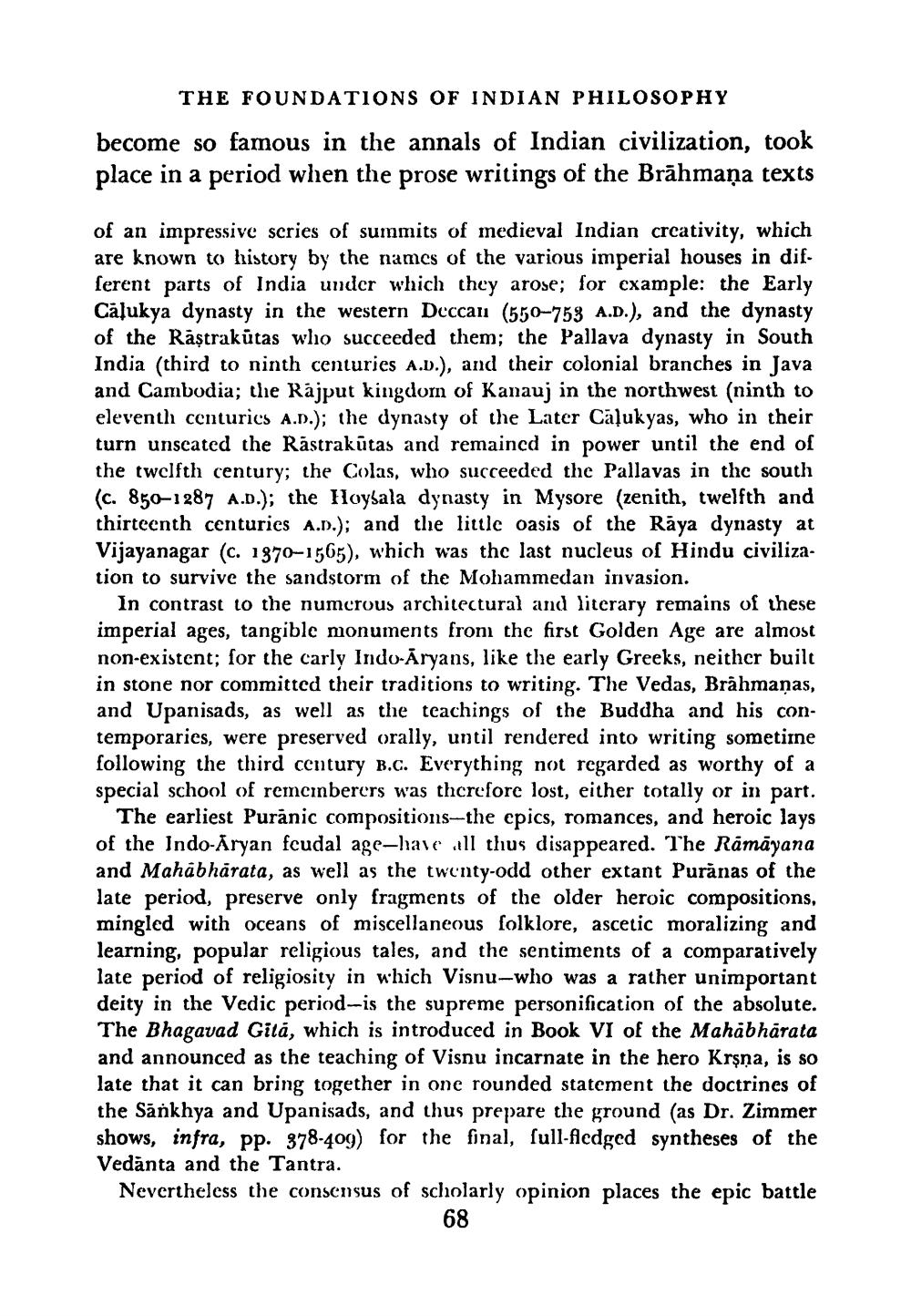________________
THE FOUNDATIONS OF INDIAN PHILOSOPHY become so famous in the annals of Indian civilization, took place in a period when the prose writings of the Brāhmaṇa texts
of an impressive scries of summits of medieval Indian creativity, which are known to history by the names of the various imperial houses in different parts of India under which they arose; for example: the Early Calukya dynasty in the western Deccani (550–753 A.D.), and the dynasty of the Râştrakūtas who succeeded them; the Pallava dynasty in South India (third to ninth centuries A.D.), and their colonial branches in Java and Cambodia; the Rajput kingdom of Kanauj in the northwest (ninth to eleventh centuries A.D.); the dynasty of the Later Caļukyas, who in their turn unscated the Răstrakūtas and remained in power until the end of the twelfth century; the Colas, who succeeded the Pallavas in the south (c. 850–1287 A.D.); the Hoysala dynasty in Mysore (zenith, twelfth and thirteenth centuries A.D.); and the little oasis of the Raya dynasty at Vijayanagar (c. 1970-1565), which was the last nucleus of Hindu civilization to survive the sandstorm of the Mohammedan invasion.
In contrast to the numcrous architectural and literary remains of these imperial ages, tangible monuments from the first Golden Age are almost non-existent; for the carly Indo-Aryans, like the early Greeks, neither built in stone nor committed their traditions to writing. The Vedas, Brāhmaṇas, and Upanisads, as well as the teachings of the Buddha and his contemporaries, were preserved orally, until rendered into writing sometimne following the third century B.C. Everything not regarded as worthy of a special school of remcinberers was therefore lost, either totally or in part.
The earliest Purānic compositions-the epics, romances, and heroic lays of the Indo-Aryan fcudal age-have all thus disappeared. The Rāmāyana and Mahabharata, as well as the twenty-odd other extant Puranas of the late period, preserve only fragments of the older heroic compositions, mingled with oceans of miscellaneous folklore, ascetic moralizing and learning, popular religious tales, and the sentiments of a comparatively late period of religiosity in which Visnu-who was a rather unimportant deity in the Vedic period-is the supreme personification of the absolute. The Bhagavad Gita, which is introduced in Book VI of the Mahabharata and announced as the teaching of Visnu incarnate in the hero Krsna, is so late that it can bring together in one rounded statement the doctrines of the Sankhya and Upanisads, and thus prepare the ground (as Dr. Zimmer shows, infra, pp. 378-409) for the final, full-fledged syntheses of the Vedānta and the Tantra. Nevertheless the consensus of scholarly opinion places the epic battle
68




